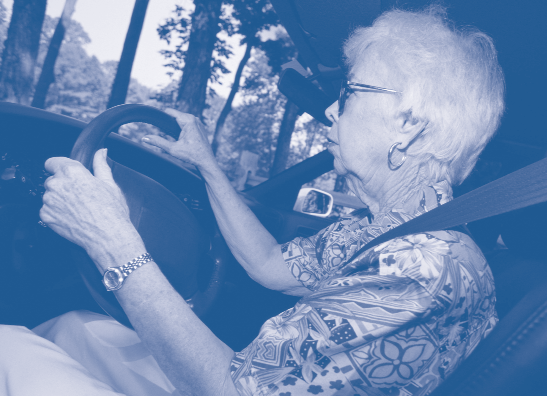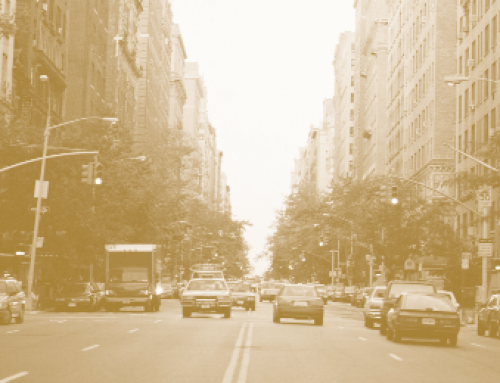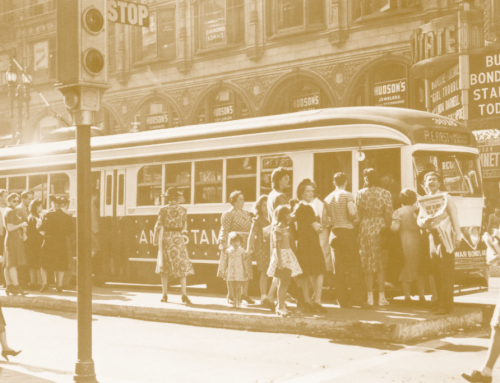[sharelines]Some policies aim for older drivers to drive less, but the elderly may not have other options.
On July 16, 2003, a disoriented older person drove at high speed down a Santa Monica street closed for a farmer’s market. His car traveled almost three blocks, killing ten people and seriously injuring scores of others before coming to a stop. Editorials throughout the nation immediately demanded that all older drivers be subject to regular and rigorous retesting. An op-ed piece by Jorge Mancillas in the San Francisco Chronicle commented,
None of [this] had to happen…. As we age, our vision and hearing often dim, reflexes slow. Arthritis can make looking over one’s shoulder a painful experience. The rate of illnesses and the intake of medications increase…. The results can be fatal…older people make up nine percent of the population but account for fourteen percent of all traffic fatalities and seventeen percent of all pedestrian fatalities.
Mr. Mancillas blamed California’s failure to require mandatory screening of all older drivers on “powerful opposition” led by AARP and the Congress of California Seniors.
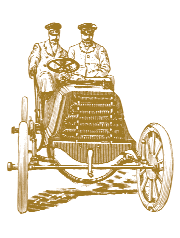 It would probably surprise the Chronicle’s readers to learn that most traffic safety experts in the US and internationally agree with AARP in opposing mandatory retesting and relicensing of all older drivers. Despite assumptions to the contrary, the elderly are not disproportionately more likely to be involved in crashes. In 2001 people over 65 accounted for roughly one in seven drivers but less than one in eight of all crashes (and an even smaller percentage of fatal crashes). Further, most research finds that mandatory testing—as currently practiced—is ineffective in reducing crash rates among the elderly. Such testing would probably not have prevented the Santa Monica tragedy.
It would probably surprise the Chronicle’s readers to learn that most traffic safety experts in the US and internationally agree with AARP in opposing mandatory retesting and relicensing of all older drivers. Despite assumptions to the contrary, the elderly are not disproportionately more likely to be involved in crashes. In 2001 people over 65 accounted for roughly one in seven drivers but less than one in eight of all crashes (and an even smaller percentage of fatal crashes). Further, most research finds that mandatory testing—as currently practiced—is ineffective in reducing crash rates among the elderly. Such testing would probably not have prevented the Santa Monica tragedy.
Background Numbers
In 2000, 35 million Americans, or 12.4 percent of the total US population, were over 65; almost 4.5 million were over 85. By 2030 the absolute number of Americans 65 and over will rise to almost 70 million and the overwhelming majority will be drivers. In 2001 roughly 95 percent of men and 80 percent of women over 65 were licensed drivers; with the licensing gap between the sexes narrowing, in just a few years almost everyone over 65 will have a license.
In 2001 drivers over 70 were involved in fewer crashes per 100,000 population than those 16 to 54 and almost half as many as those 21 to 24. While those over 65 made up 14.4 percent of all drivers in 2001 they accounted for only 8.4 percent of fatal crashes, 12.2 percent of all driver fatalities, and 12.8 percent of all crashes regardless of severity. (Note that the Chronicle op-ed piece was using, incorrectly, data from 1997.) Moreover, the people most likely to be injured or killed in these crashes are the elderly themselves and not innocent bystanders. And there is no evidence that older drivers cause crashes in which they themselves are not involved. As the National Highway Traffic Safety Administration commented, “In two-vehicle fatal crashes with an older and a younger driver, the older driver’s vehicle was three times as likely to be the one that was struck.”
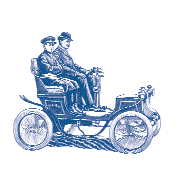 There is substantial evidence that today’s older drivers are more careful, more experienced, and have better coping skills than comparable people just a few decades ago. As a result, per capita crash rates have been declining among those over 65 for decades. At the same time, there is a safety problem, and it is growing. Even with declining per capita rates, the large increase in the sheer number of older drivers will cause an absolute increase in crash rates. Moreover we should question whether per capita rates will continue to decline. While older drivers do have fewer accidents per capita until they are very old, they have more per trip and per mile driven. Because all older drivers appear to be increasing their auto-based trip-making and thus their exposure, their crash rates may go up even if they drive more safely than comparable drivers in the past. Moreover, a greater percentage of older drivers will be over 85, which is when crash rates go up rapidly.
There is substantial evidence that today’s older drivers are more careful, more experienced, and have better coping skills than comparable people just a few decades ago. As a result, per capita crash rates have been declining among those over 65 for decades. At the same time, there is a safety problem, and it is growing. Even with declining per capita rates, the large increase in the sheer number of older drivers will cause an absolute increase in crash rates. Moreover we should question whether per capita rates will continue to decline. While older drivers do have fewer accidents per capita until they are very old, they have more per trip and per mile driven. Because all older drivers appear to be increasing their auto-based trip-making and thus their exposure, their crash rates may go up even if they drive more safely than comparable drivers in the past. Moreover, a greater percentage of older drivers will be over 85, which is when crash rates go up rapidly.
In addition, per capita crash rates for older people are low because older drivers self- regulate; they avoid congested areas, left turns, night time driving, unfamiliar roads, and freeways. However, my research suggests it is doubtful that future generations of older drivers will self-regulate as much as those currently over 65. Used to the flexibility and convenience of the car they simply may not be willing to change their driving habits substantially because doing so will negatively affect their lifestyles. If so, per capita crash rates among the elderly may well increase despite greater driving skills.
The Great Debate: Age vs. Behavior
Around the US and the developed world some jurisdictions impose age-based restrictions to deal with these trends. When older drivers reach a certain age (often 70 or 75) they must submit to more frequent or different kinds of vision, performance, and driving tests. Such approaches are not consistent across the US, but they clearly are politically salient. However, many countries and a few US states are moving away from age-based testing to behavior-based testing. That is, rather than testing all 70-plus drivers, many jurisdictions have begun to test only those drivers—of any age—who have had serious crashes or multiple traffic violations or who have been reported by friends or family. Germany, for example, has a “driving for life” policy and reassesses driving competence only after a driver has multiple violations. In 2000, the state of Indiana abandoned age-based testing for license renewal because a major task force found no proof that its expensive testing actually reduced crashes among the elderly.
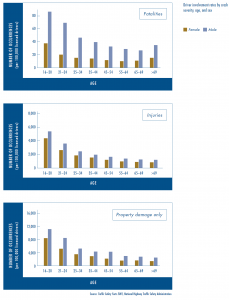 This change in strategy responds to a growing literature showing that age-based testing is rarely useful or cost-effective. Studies in both 1988 and 2002 found no difference in crash rates between older drivers in Victoria—the only Australian state with- out mandatory older driver retesting—and those in the other Australian states. Probably the most compelling evidence came from a large multiyear study comparing the crash rates of older drivers in Finland and Sweden. Sweden has a “driving for life” policy with automatic license renewals, while Finland requires extensive testing and screening of older drivers. Although the tests in Finland did lower licensing rates among the elderly, there were no significant differences in the crash or injury rates of older drivers in the two countries.
This change in strategy responds to a growing literature showing that age-based testing is rarely useful or cost-effective. Studies in both 1988 and 2002 found no difference in crash rates between older drivers in Victoria—the only Australian state with- out mandatory older driver retesting—and those in the other Australian states. Probably the most compelling evidence came from a large multiyear study comparing the crash rates of older drivers in Finland and Sweden. Sweden has a “driving for life” policy with automatic license renewals, while Finland requires extensive testing and screening of older drivers. Although the tests in Finland did lower licensing rates among the elderly, there were no significant differences in the crash or injury rates of older drivers in the two countries.
Mandatory retesting does get some older people to stop driving, as it did in Finland, but apparently not the right drivers—or crash rates among older people would drop. Every month Pennsylvania rescreens 1,600 drivers of all ages who have been reported or have certain kinds of accidents. Although less than one percent of retested drivers fail either the vision or medical test, more than 28 percent voluntarily stop driving or give up their licenses. Those most likely to be discouraged are women over 65—who have substantially lower crash rates per capita and per exposure than men over 65. Thus we may be removing drivers who are not contributing significantly to older-driver crash rates.
Because testing does reduce the number of older drivers some people assume we’ve accomplished our purpose when we haven’t.
As a result of such research many analysts have joined elderly advocates in arguing that it makes more sense to test only high-risk drivers—those whose record has created a rationale for assuming that they are poor drivers—and to do so with better, more sophisticated techniques.
The Problems With Testing
Age-based testing may not be more effective because it is far more subjective than it appears. Which drivers get tested—and how—varies widely even in the same jurisdiction, while current tests are not very good.
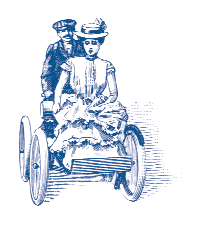 First, while 28 US states require all drivers to come to the Department of Motor Vehicles each time they renew their licenses, only a few states specify an age limit for appearing in person. But in all these states whether and how an older person is retested is entirely at the discretion of the examiner. A 1997 study of 51 DMV examiners across the US revealed that the single most used criterion for determining whether drivers required additional testing was how they looked when they came through the door. (At the same time, the examiners did not feel that requiring a driver to report in person before a licensing official was a useful way to identify unsafe drivers.)
First, while 28 US states require all drivers to come to the Department of Motor Vehicles each time they renew their licenses, only a few states specify an age limit for appearing in person. But in all these states whether and how an older person is retested is entirely at the discretion of the examiner. A 1997 study of 51 DMV examiners across the US revealed that the single most used criterion for determining whether drivers required additional testing was how they looked when they came through the door. (At the same time, the examiners did not feel that requiring a driver to report in person before a licensing official was a useful way to identify unsafe drivers.)
Second, in many states the type and content of additional testing may depend entirely on the examiner’s evaluation of the older driver. For example, in the District of Columbia all drivers 75 and above must take a vision test but may be asked to take reaction and/or road tests. Thus there is wide variation in the type of additional tests required. Who passes and who fails can also be arbitrary. In a 1988 study, licensing authorities in Vermont and Maine noted that in rural areas examiners were inclined to allow older people to keep their licenses, even when they were not safe drivers, because examiners knew the drivers had no other mobility options.
Third, we don’t have accurate tests of driving safety, although research is ongoing to develop better measures. Studies over several decades have consistently shown that neither age nor the presence of many medical conditions or impairments has a strong relationship to crash rates. Even poor vision—the most common condition older drivers are screened for—has little relationship to crashes among the elderly. The Sacramento Bee took a thoughtful approach in its editorial on the Santa Monica tragedy:
While older drivers don’t constitute a “health crisis” today, that could change as the percentage of older people both in the population and on the road grows. That’s why efforts to develop more accurate and reliable driver’s tests should continue.
What’s The Answer?
The US and Australia have developed and are currently testing model programs that individual states could adopt to increase the cost-effectiveness and equity of their licensing approaches. The model is a two-tier program with initial screening processes based on behavior rather than age or appearance; they are designed to be easily, cheaply, and uniformly applied to drivers required to undergo evaluation. The first-tier tests can identify those older people who can continue to drive safely, those who might benefit from additional in-car driving training, and those who require additional screening or evaluation. Then appropriate—and more detailed and expensive—tests are applied to those requiring additional evaluation; the outcome of the second-tier testing could be removal of the license, restrictions on the license, or mandatory retraining to keep the license.
But both the US and Australian governments recognize that a better system of testing by itself will be ineffective unless 1) we develop and widely implement age-appropriate driver retraining courses, 2) older drivers have ways to test their own competence in a non-coercive situation (to encourage them to either relinquish licenses or seek retraining voluntarily), and, perhaps most importantly, 3) they have meaningful mobility alternatives—which most communities currently lack.
The general public and the traffic safety community have too long assumed that there are sufficient community resources—like paratransit services, taxis, and public transit—to meet the needs of older people forced to give up driving. But most communities are far from meeting the transportation needs of the elderly today and are less likely to do so in the next three decades when the population of older people doubles. Perhaps the best way to encourage older people to reduce and ultimately give up driving when they should is to ensure that each community has a large and effective repertoire of transportation options, including volunteer networks, better and safer conventional public transit, expanded nontraditional community-based transit services, voucher programs for both profit and not-for-profit providers, and expanded roles for informal transportation providers. These options should be augmented by better land use, housing, and transportation planning to develop and maintain more pedestrian-oriented and elder-friendly neighborhoods.
The aging of the population, and the fact that most older people are drivers, raise serious questions that policymakers must address. There is no magic bullet, no easy answer to this complex problem, although that is really what most people are seeking when they advocate mandatory retesting of older drivers.
Further Readings
Roger W. Cobb and Joseph Coughlin, “Are Elderly Drivers a Road Hazard? Problem Definition and Political Impact,” Journal of Aging Studies, vol. 12, no. 4, pp. 411–428, 1998.
Brian Fildes, Nicky Pronk, Judith Charlton, Jim Langford, and Bill Frith. Development of a National License Assessment Program
for Older Drivers in Australasia (Victoria, Australia: Monash University Accident Research Centre, 2002.)
Liisa Hakamies-Blomqvist, Kurt Hohansson, and Catarina Lundberg, “Medical Screening of Older Drivers as a Traffic Safety Measure: A Comparative Finnish-Swedish Evaluation Study,” Journal of the American Geriatric Society, vol. 44, no. 6, June 1996
National Highway Traffic Safety Administration. Traffic Safety Facts 2001: Older Population. (Washington DC: National Center for Statistics and Analysis, 2001).
Sandi Rosenbloom. The Mobility Needs of Older Americans: Implications for Transportation Reauthorization. Transportation Reform Series, Center on Urban and Metropolitan Policy. (Washington, DC: The Brookings Institution, July 2003.)
Sandra Rosenbloom, “The Mobility of the Elderly: There’s Good News and Bad News,” in Transportation Research Board, Transportation and an Aging Society (Washington: National Academy Press, forthcoming).

